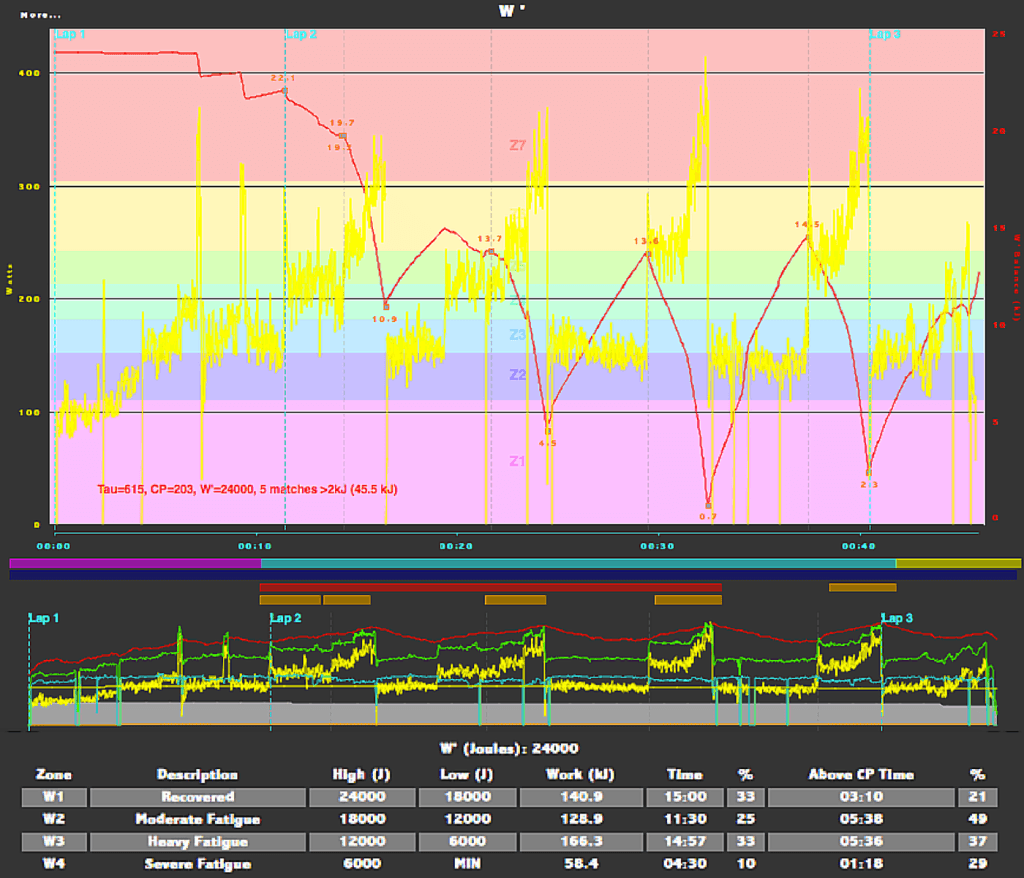Most training plans put an emphasis on higher intensity training as the season progresses. After building a solid functional base of fitness, you need to challenge your body in different ways to stimulate adaptations. These two VO2 max workouts aim to challenge your body well beyond your comfort zone in less than an hour each, leading to big adaptations and big changes in your fitness and speed on the bike.
Why VO2 Max Workouts?
As I discussed in podcast 66, raising the ceiling on your fitness is important to ensure continued growth and improvement in your cycling fitness. VO2 max workouts are the perfect way to push your body beyond its comfort zone and force it to adapt and improve. Here's an analogy for you: if you put a plan in a room with a 3-foot ceiling, once it grows into the ceiling it begins to spread out to the sides. It never gets taller. If you raise the ceiling to 10 feet, the plant has a lot more room to grow before it begins to spread out.
Your fitness is like that plant: if you never raise the ceiling, you'll never be able to grow. That's why these VO2 max workouts are so effective at improving your body's ability to perform and raising your fitness level: they force you to train where it hurts and push your limits. Many cyclists don't like to push beyond their limits or train “where it hurts” so they leave those big breakthrough fitness gains out on the road. By using the two VO2 max workouts included at the end of this article, you'll realize bigger fitness gains and more performance in under an hour per workout.
Click through the jump for two free VO2 max workouts, an explanation of why they work so well and a downloadable cheat sheet to follow when you're on the trainer!
The 3221:
The goal of this kind of workout is to deplete your anaerobic energy stores (or your W' as I discuss in this podcast) and force your body to work hard to adapt its aerobic energy system. Specifically, you'll challenge your body with a number of different intensities and durations, starting with zone 5 and tickling zone 7 toward the end. You'll start with a modest 3 minutes at 105% of your FTP, immediately ramp up to a minute at lower zone 6 and then upper zone 6. The second set of intervals starts significantly harder, just above your zone 5 for a couple of minutes and ramps up to a full gas zone 7 effort for the last 30 seconds. Both intervals simulate attacks or climbs in a race or group ride and can be made harder by increasing the intensity of the 4 minute recovery between each interval set from easy spinning to sweet spot intensity.
You'll repeat each interval set 3 times for about 45 minutes worth of work. Here's what the workout looks like:
- 3 minutes @ 105% FTP
- 1 minute @ 125% FTP
- 1 minute @ 150% FTP
- 4 minutes rest (easy spinning or sweet spot intensity)
- 2 minutes @ 125% FTP
- 30 seconds @ 150% FTP
- 30 seconds @ 175% FTP
- 4 minutes rest (easy spinning or sweet spot intensity)
Repeat that sequence 3 times. Be sure to warm up and cool down appropriately.
The 3/3/3
A very similar ramp style workout as the 3221, this interval workout relies on longer duration intervals to achieve the similar W' depletion and aerobic benefit. The intensities are dialed back a little bit to ensure you're able to complete the efforts and the recovery intensity is cranked up a little bit to make sure your body can't completely clear out all the junk before the next interval starts. By the end of each interval, you should be fighting to stay with the intensity just a little bit, which is exactly how your body will be forced to adapt.
You'll repeat this interval set 3 times giving you about 45 minutes worth of effort:
- 3 minutes @ 105% FTP
- 3 minutes @ 115% FTP
- 3 minutes @ 125% FTP
- 5 minutes rest (75% FTP)
Repeat that sequence 3 times with appropriate warmup and cool down built around it.
What Should These VO2 Max Workouts Look Like?
Take a look at the image below and you'll get an idea of what a 3+2 interval block and a 2+1 interval block looks like:
The above workout is a variation of the 3221 workout I listed above. It is a double 3+2 and double 2+1 workout back to back. Of interest to us here is the W' depletion and how much time is spent below 50% and 25% of W'. If you look closely at the graph, W' drops to under 50% after the first 3+2 interval. It dips again during the second interval, diving below 25% for the first time. The 2+1 intervals serve to continue the trend of working below 50% W' for much of the rest of the workout.
The table at the bottom of the graph is just as telling, showing that about 19.5 minutes of a 45 minute workout were spent below 50% W'. Four and a half minutes was spent below 25% W', meaning the body has very little anaerobic energy left to use and is stimulated to increase oxygen carrying capacity and utilization.
The key to improving your VO2 max physiology and raising the ceiling on your fitness is to work around that 25% of W'. As you can see from the graph above, you'll spend plenty of time around that mark with these workouts. Feel free to share this post (or subscribe to the Tailwind Coaching Newsletter) and then download your free copy of my VO2 Max Variations HIT Workout!
Subscribe to the Tailwind Coaching Newsletter to unlock your free content and get my exclusive coaching tips, fitness advice and exclusive discounts in your inbox!




Hi, thanks for the article.
Since these workouts are aimed at increasing VO2max, why not base the intensities on power at VO2max? Different people have their FTP at different % of their VO2max, so the stress is going to be different between people for the same % of FTP. For example I was looking at the 3/3/3 training, the last 3 minutes at 125% of FTP are going to be way above my VO2max. After 6 minutes of anaerobic effort, I don’t see how I can do that (starting fresh, 4 minutes bouts at the same intensity are already very hard).
Hi Jonathan,
The reason I (and most coaches) aren’t basing VO2 max training off power @ VO2 max is that an average cyclist has no way of laboratory testing for VO2 max level power. Remember too that you’ll never have an FTP that is at your VO2 max; there’s aways some reserve capacity above threshold, so truly, the last 3 minutes should be just *barely* above threshold into your full anaerobic power zone. Additionally, you’re looking to push that VO2 max higher (in terms of ml/kg/min) so you’re looking to challenge your body’s capability to produce oxygen to working muscles, deplete ATP, CP and other intramuscular energy substrates and induce genetic factors like HIF and PGC1-a via AMPK.
True, the 3/3/3 protocol is a very hard interval set. But, it’s actually a very similar interval set that is used by a large number of UCI professional cyclists (Jay McCarthy has been quoted as loving this one, specifically.) Believe me, if your FTP is set correctly, it’s a VERY difficult protocol to complete. If your FTP is set 10 watts too high, it may well be impossible.
Thanks for the answer,
well the trainings you propose here are based on FTP, which if rigorously measured needs the same equipment as the one needed to determine power at VO2max. In other posts you suggest to perform a 30min time trial to estimate FTP, so with the same approach it’s possible to estimate power at VO2max by performing a 6min time trial. I believe it would make these exercises more bearable and accurate. The added benefit of performing 6 minutes time trials once in a while is to monitor progress in VO2max.
You could absolutely base these off your tested vo2 power numbers. You can test your 3 minute power and use that as the 125% number for the interval. Or you can test full 3 minute power and use that.
How you’re approaching it is very different from most folks who are training at this level but I really like the approach. To really personalize an interval series like the 333 you’ll want to train at cp20 for the first 3, cp8 for the second 3 and cp3 for the last 3. For most folks simply following the % FTP is plenty as most folks I’ve worked with don’t track their metrics as closely.